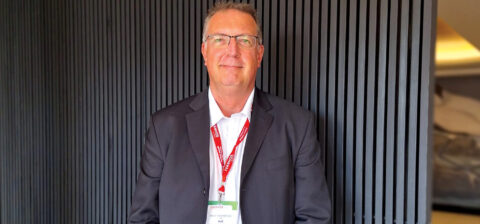CSI
Regenerating Mining Communities
Minerals, such as gold and diamond, extracted by mining companies represent a kind of opulence which is not often reflected in the communities where these minerals are mined. For years, the mining industry has faced a contradiction: a close look at the sustainability reports produced by big mining houses in South Africa such as Exxaro, Anglo American and De Beers, gives an indication that only in post-democracy South Africa these corporations are starting to realise the importance of giving back to the communities in which they operate. However, the question still remains, do community members see the fruits of this consciousness?
Clarity around the role of mining companies
The seriousness with which mining companies in South Africa take their social responsibility role is reflected in a statement by Sipho Nkosi, the former CEO and head of the Exxaro Chairman’s Fund, who says, “Growth, development and empowerment lie at the heart of truly effective corporate social responsibility (CSR) initiatives in South Africa.” In its 2015 sustainability report, Exxaro, a big coal and heavy minerals mining company operating with offices in Australia, Africa, Asia, and Europe, states that, annually, it
spends an average of R60-million on local economic development (LED) programmes in
South Africa.
In its 2016 sustainability report, Anglo American, a multinational mining company with headquarters in London and Johannesburg, says, “Our goal is for host communities and governments to be left better off than when we arrived.” The same words are echoed by De Beers, the biggest diamond company in the world, in its 2016 sustainability report where it indicates, “Investment in the future of communities beyond the life of our operations is core to receiving our social licence to operate.”
Clear as it is from the well-written corporate sustainability reports of the major mining companies, the only people who can truly say whether mining companies’ CSI activities are benefiting communities or not, are the communities themselves – it is only their testimony that truly reflects if communities and individual lives have been transformed.
The transformation of Lephalale
Limpopo Province is one of the important provinces in South African mining. It hosts mining giants such as Anglo American and
Exxaro that extract minerals such as platinum, diamonds and coal. However, this is a province beset by socio-economic challenges associated with a large population, low levels of literacy and a high unemployment rate.
The Limpopo Province is also home to one of South Africa’s biggest transformation stories resulting from coal mining activities: Lephalale. The Medupi Project, accompanied by the expansion of coal mining to feed the power station, is rapidly transforming the small town, once known as Ellisras, into a metropolis. It has been predicted by some that it will grow as large as the province’s capital, Polokwane, within just a few years.
When asked whether mining communities are better off now than they were before the dawn of democracy, Kone Shavhani, the managing director of Boithlamo Brickmaking Project, an initiative funded by Exxaro, doesn’t hesitate to say yes. He also says that the construction of the power station at Medupi has boosted business for them, owing to the increased demand for housing. “Due to the support received from Exxaro, we have been able to turn a marketplace into a supply-and-demand chain, and in the process created a sustainable business,” he adds. Encouraged by the success of the project, this group of six graduates from the Exxaro-funded Mogolo Academy (also located in Lephalale) established Boithlamo Construction Development in 2010. Asked how the assistance received from Exxaro has improved his own life, Shavhani indicates that apart from assisting him to hone his skills to such an extent that he is now confident enough to think of
himself as an entrepreneur, the project has assisted him to educate his siblings. He further emphasises that “the project now employs about 15 people who support their families and send children to school”. He goes on to report that two of the houses they built in Marapong Extension 4 were handed over to people living with disabilities and another three were given to other disadvantaged families.
Educating communities in Rustenburg
Another South African town that has been greatly impacted through mining activities is Rustenburg, situated in North West Province. In its 2016 research into the impact of mining companies in Rustenburg, titled, The impact of platinum mining in Rustenburg, Eunomix Research reports that the three main platinum companies, Anglo American, Impala and Lonmin, have invested considerable amounts with the aim of improving the socio-economic status of those who work for them and the communities in which they live.
According to the Eunomix research report, the aggregate amount invested by the three major platinum companies between 2011 and 2013 in education and training was R139.8-million. This translates into the support of more than 25 000 students – representing almost a quarter of the total number of students enrolled in Rustenburg’s educational institutions.
When is enough enough?
The question whether mining companies are doing enough to alleviate poverty in communities where they operate was posed to Busisipho Siboyi, the author of a report published by the South African Institute for International Affairs titled, Corporate Social Responsibility in South Africa’s Mining Industry: An Assessment, and the answer was, “They are making a difference, but there are still a number of challenges that should be addressed”.
Strategic planning
The challenges according to Siboyi include a
lack of coordination between government departments at national, provincial and local levels, coupled with ineffectual policy alignment to development plans.”
Asked how this problem could be alleviated, Siboyi says that the answer probably lies in “strategic planning and coordination with relevant stakeholders such as local municipalities, provincial education departments and service providers. It is also important to consistently review processes through monitoring and evaluation, especially the outcomes of corporate social responsibility and investment initiatives, and to effectively consult with local municipalities with regards to basic services, such as the provision of water and electricity.” This view is supported by the Anglo American 2016 sustainability report – it indicates that the magnitude of socio-economic challenges in South Africa, “require action on a scale greater than one mine can begin to tackle”. Hence the company believes that the success of social initiatives relies on coordination between various stakeholders.






 Sign-up and receive the Business Media MAGS newsletter OR SA Mining newsletter straight to your inbox.
Sign-up and receive the Business Media MAGS newsletter OR SA Mining newsletter straight to your inbox.